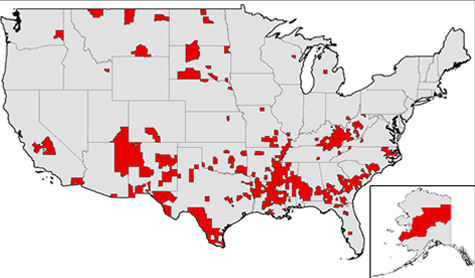LIHTC in Rural Persistent Poverty Counties
Areas of poverty can be defined in many different ways. One measure that takes both severity and pervasiveness of poverty into account is the designation of a Persistent Poverty County (PPC), defined under federal law as a county that has had a poverty rate of at least 20% in each of the last three decennial censuses (1990 to 2010). Today, 7.9 million people live in the rural parts of PPCs, which constitute 38.1% of the population of these counties.
Developing unsubsidized rental housing in rural PPCs is challenging since household incomes are often too low to support units that can charge enough rent to cover construction and operating expenses. Consequently, subsidized housing is far more common in these areas than in other regions. However, even subsidized housing faces challenges both in terms of economic feasibility and allocation of limited federal, state and local funding.
In this paper, we explore the multifamily housing market in rural PPCs with a special focus on the primary means by which the federal government supports the development of affordable housing nationwide: the Low-Income Housing Tax Credit (LIHTC) program. To support our analysis, we compiled and analyzed multiple data sources, conducted market research and consulted market participants. Our goal is to provide clarity regarding the market size and distribution of tax credits in the rural parts of PPCs and examine housing and demographic characteristics of these areas that influence the LIHTC and overall rental housing market. Market participants can use our findings to inform future research, guide housing policy and identify market opportunities. Read the report.
Map of Rural Persistent Poverty Counties
